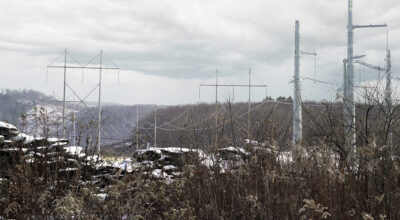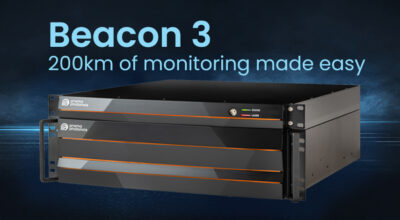The US power grid is in a precarious position. Firstly, there is its rapidly-aging infrastructure, which in some cases is over half a century old. Then there is also the issue of its massively growing, yet wildly fluctuating seasonal demand. Put simply, the need to modernize the US grid is urgent. In fact, the Energy Information Administration projects demand will grow by 1% a year in the coming years, while production will shift to more and more renewable sources. This means greater fluctuations in ongoing transmission volume and increasingly erratic demand.
Power grids in some areas of the US are already feeling the pinch of emerging usage patterns. And natural events like the recent hurricane in Florida, the drought in the Southwest and wildfires in the West—many of which are fueled or exacerbated by climate change—are only making things worse.
Even as the power grid is slated for significant upgrade under the infrastructure provisions in the recently-signed Inflation Reduction Act, power line operators are seeking new ways of improving grid reliability to prevent shortfalls, outages, and blackouts. One way to enhance reliability is more effective and accurate monitoring of the nearly 160,000 miles (190,000 km) of power lines that comprise the US power grid.
Fiber optic sensing technology can help
Fiber Optic Sensing technology enables transmission systems operators to monitor thousands of kilometers of overhead power lines accurately and in real-time. It does this by providing continuous, real-time measurements along the entire length of a fiber optic cable—as opposed to traditional monitoring, which requires the placement of physical devices along the transmission wires themselves.
Monitoring power lines for faults with Fiber Optic Sensing —and more specifically with Distributed Acoustic Sensing (DAS), a subset of Fiber Optic Sensing —is viable and already in wide-scale usage worldwide. But, there remain some common misconceptions about the advantages and applications of Fiber Optic Sensing for power line monitoring.
Six misconceptions about fiber optic sensing:
Here are six misconceptions that people shared with us.
1. Fiber optic sensing can only be used on oil and gas pipelines, not on power lines
While it’s true that Fiber Optic Sensing is commonly used in Oil & Gas pipelines, it can also be effectively used in power lines. Fiber Optic Sensing in power line monitoring leverages existing optical ground wire (OPGW) – and requires no additional cabling or equipment. OPGW cables have been installed on most modern US electrical transmission grids. When retrofitting is done, it is an OPGW used for that grounding wire. The wires were installed to provide high-speed data transmission capabilities for grid operations and as infrastructure for broadband internet services.
2. Fiber optic sensing is difficult to implement
While the Fiber Optic Sensing installation process has some variations, using a technologically advanced solution like PrismaPower is as simple as plugging a USB cable into your computer. Since PrismaPower requires no installation of physical devices along transmission wires, there are no helicopters, no cranes, no satellite link-ups and no remote crew deployments. In just hours, PrismaPower turns OPGW wires into a highly sensitive distributed sensor extending for hundreds and thousands of kilometers, providing you with real-time, accurate data.
3. Fiber optic sensing technology cannot be widely used for utilities
Utility operators installed optical ground wire (OPGW) cables for communication along their infrastructure. These were installed mainly for operational use but are also leveraged to sell bandwidth to communication service providers and enterprises. Surprisingly, most fiber optic cables installed are actually “dark”—meaning they are not currently being used for anything and are readily available to use.
4. Fiber optic sensing can only tell when a failure has already occurred
While fiber optic sensing can indeed remotely identify safety events like physical damage, extreme weather, electrical faults, vandalism, physical cyberattacks, and more in real-time, advanced solutions like PrismaPower, however, can do far more. They can actually prevent failures from occurring by identifying issues before they become critical. PrismaPower does this using distributed acoustic sensing (DAS) technology. DAS enables PrismaPower to detect acoustic and thermal energy and vibrations generated by activity around a transmission tower. These can be caused by events like partial discharges from bad insulation, cable galloping, vegetation hits,, or any sabotage by human activity in proximity to the tower. PrismaPower identifies such events early on and pinpoints on which individual tower(s) the issue is occurring. This enables transmission operators to address issues before they escalate to actual power outages.
5. Fiber optic sensing is too expensive
Fiber Optic Sensing leverages existing infrastructure. It does not require the installation of hardware across thousands of miles of power lines, or demand ongoing physical human monitoring via vehicle, helicopter, or drone. This makes Fiber Optic Sensing very cost-effective on a per-kilometer basis, capable of covering vast distances with a minimal footprint. In addition, the cost of halting operations due to failures can have significant monetary, and economic impacts, and must also be considered in this regard.
6. You need a human operator to analyze the data from the optical fiber
Power line operators and TSOs are rightly concerned about burdening command and control staff with monitoring since they are already stretched thin. However, Fiber Optic Sensing -based monitoring requires far less staff attention and intervention than traditional power line monitoring. Automated monitoring and detection eliminate the need for work crews to be constantly in the field conducting preventative maintenance surveys. What’s more, advanced solutions like PrismaPower leverage machine learning to do the heavy lifting. PrismaPower’s algorithms analyze the detailed data collected through our grid sensors, then automatically pinpoint and alert crews of events at the tower level in real-time. This lowers the time and effort spent locating faults—actually reducing the burden on staff, not raising it.
Fiber optic sensing – A step forward for power line monitoring
Effective monitoring at scale is crucial not just for maintaining power lines, but to ensure the grid reliability and energy delivery security that enables economic stability. The US electrical transmission grid remains vulnerable to outages owing to poor monitoring capability. To ensure energy delivery in the face of growing demand, and an increasingly volatile environment, there is a real need for a highly-scalable and cost-effective monitoring solution.
A Fiber Optic Sensing based monitoring system such as PrismaPower is the solution. Advances in technology have changed the Fiber Optic Sensing ecosystem dramatically. The technology is field-proven, cost-effective, and enhances grid reliability by letting transmission systems operators monitor thousands of kilometers of power lines accurately and in real-time. With zero investment in physical equipment and only hours of setup time, Fiber Optic Sensing solutions like PrismaPower offer economical, accurate, and reliable monitoring to the power transmission industry.
To learn more about how PrismaPower is changing the face of power line monitoring, contact us today!






